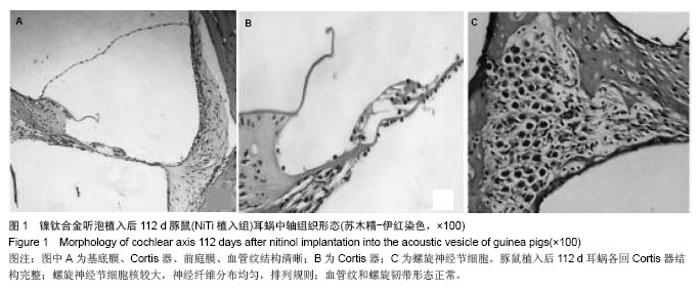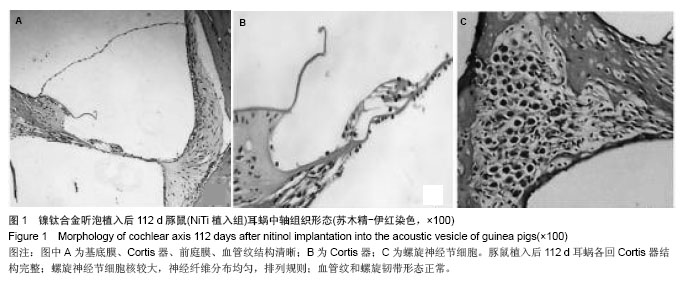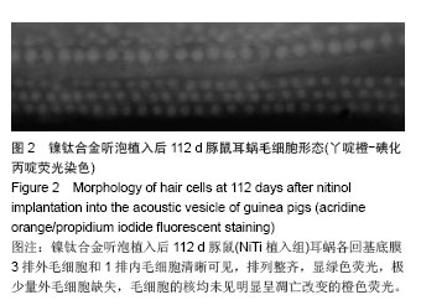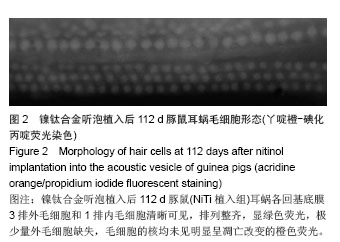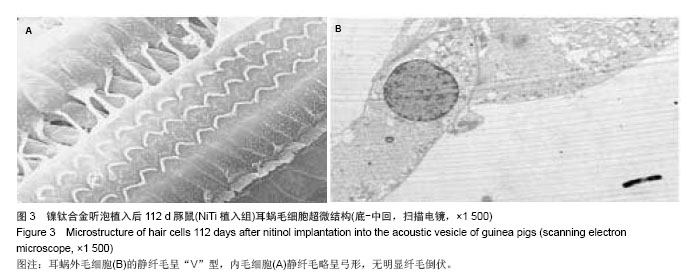| [1]Es-Souni M, Es-Souni M, Fischer-Brandies H. Assessing the biocompatibility of NiTi shape memory alloys used for medical applications. Anal Bioanal Chem. 2005;381(3):557-567.
[2]Luers JC, Huttenbrink KB, Mickenhagen A, et al. A modified prosthesis head for middle ear titanium implants-- experimental and first clinical results. Otol Neurotol. 2010; 31(4): 624-629.
[3]顾其胜,侯春林,徐政.实用生物医用材料学[M].上海:上海科学技术出版社,2005:170-181.
[4]Tenney J, Arriaga MA, Chen DA, et al. Enhanced hearing in heat-activated-crimping prosthesis stapedectomy. Otolaryngol Head Neck Surg. 2008;138(4):513-517.
[5]张媛媛,肖自安,李周,等.镍钛合金在豚鼠听泡的生物相容性观察[J].听力学及言语疾病杂志,2010,18(3):211-213.
[6]龚树生.听骨赝复体[J].中国医学文摘(耳鼻咽喉科学), 2008, 23(1): 39-40.
[7]Mudhol RS, Naragund AI, Shruthi VS. Ossiculoplasty: Revisited. Indian J Otolaryngol Head Neck Surg. 2013;65 (Suppl 3):451-454.
[8]Blake DM, Tomovic S, Jyun RW. Extrusion of hydroxyapatite ossicular prosthesis. Ear Nose Throat J. 2013;92(10-11): 490-494.
[9]Shah KD, Bradoo RA, Joshi AA, et al. The efficiency of titanium middle ear prosthesis in ossicular chain reconstruction: our experience. Indian J Otolaryngol Head Neck Surg. 2013;65(4):298-301.
[10]Roosli C, Schmid P, Huber AM. Biocompatibility of nitinol stapes prosthesis. Otol Neurotol. 2011;32(2):265-270.
[11]Shen Y, Zhou HM, Zheng YF, et al. Current challenges and concepts of the thermomechanical treatment of nickel-titanium instruments. J Endod. 2013;39(2):163-172.
[12]Li Q, Zeng Y, Tang X. The applications and research progresses of nickel- titanium shape memory alloy inreconstructive surgery. Australas Phys Eng Sci Med. 2010; 33(2):129-136.
[13]Hornung JA, Brase C, Bozzato A, et al. Retrospective analysis of the results of implanting Nitinol pistons with heat-crimping piston loops in stapes surgery. Eur Arch Otorhinolaryngol. 2010;267(1):27-34.
[14]Mangham CA Jr. Nitinol-teflon stapes prosthesis improves low-frequency hearing results after stapedotomy. Otol Neurotol. 2010;31(7):1022-1026.
[15]Massuda ET, Maldonado LL, Lima Júnior JT, et al. Biosilicate ototoxicity and vestibulotoxicity evaluation in guinea-pigs. Braz J Otorhinolaryngol. 2009;75(5):665-668.
[16]Ohkubo C, Hanatani S, Hosoi T. Present status of titanium removable dentures--a review of the literature. J Oral Rehabil. 2008;35(9):706-714.
[17]Ryhänen J, Niemi E, Serlo W, et al. Biocompatibility of nickel-titanium shape memory metal and its corrosion behavior in human cellcultures. J Biomed Mater Res. 1997; 35(4): 451-457.
[18]Shabalovskaya SA. On the nature of the biocompatibility and on medical applications of NiTi shape memory and superelastic alloys. Biomed Mater Eng. 1996;6(4):267-289.
[19]Gutmann JL, Gao Y. Alteration in the inherent metallic and surface properties of nickel-titanium root canal instruments to enhance performance, durability and safety: a focused review. Int Endod J. 2012;45(2):113-128.
[20]Savolainen H. Biochemical and clinical aspects of nickel toxicity. Rev Environ Health. 1996;11(4):167-173.
[21]El-kholany NR, Abielhassan MH, Elembaby AE, et al. Apoptotic effect of different self-etch dental adhesives on odontoblasts in cell cultures. Arch Oral Biol. 2012;57(6): 775-783.
[22]杨卫平,胡博华.三种检测耳蜗毛细胞死亡模式方法的比较[J].中华耳科学杂志,2004,2(4):301-304.
[23]Skoe E, Kraus N. Auditory brain stem response to complex sounds: a tutorial. Ear Hear. 2010;31(3):302-324.
[24]Johnson TA. Cochlear sources and otoacoustic emissions. J Am Acad Audiol. 2010;21(3):176-186.
[25]崔博,左红艳,吴铭权,等.豚鼠听性脑干反应参数53例分析[J].实验动物科学与管理,2004,21(4):57-59. |
